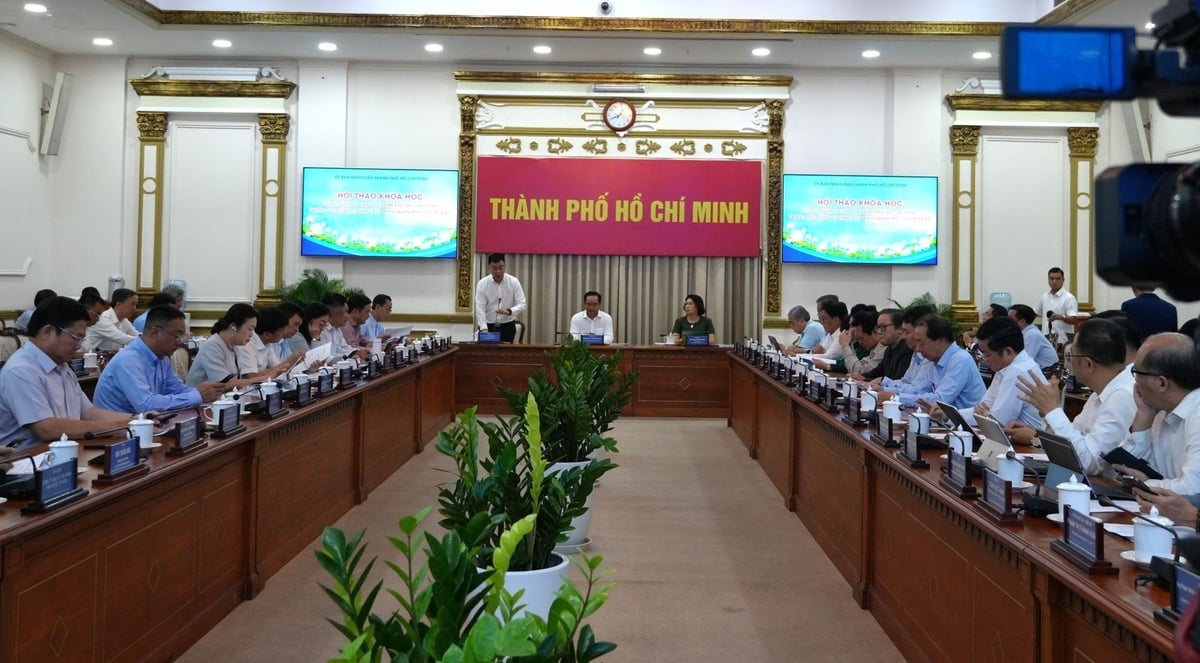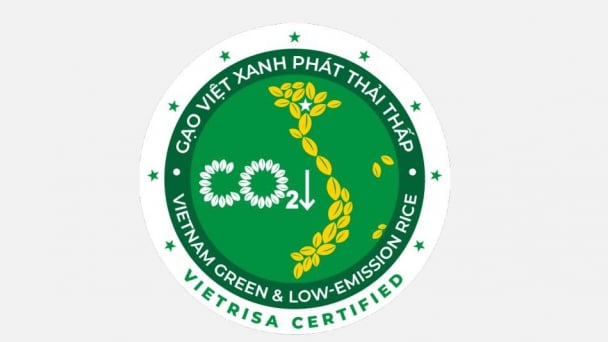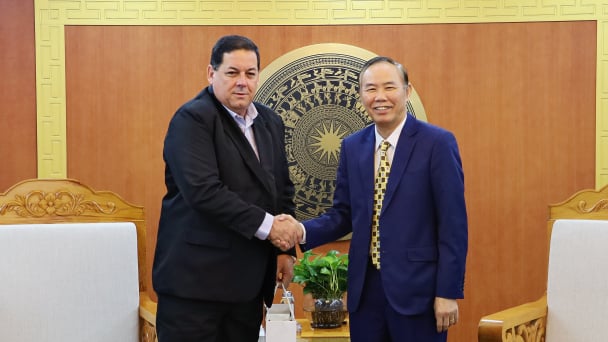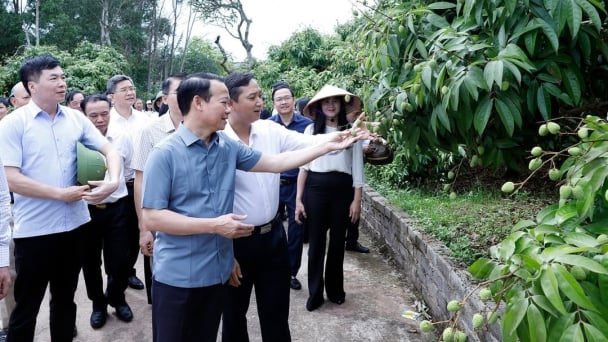May 15, 2025 | 05:48 GMT +7
May 15, 2025 | 05:48 GMT +7
Hotline: 0913.378.918
May 15, 2025 | 05:48 GMT +7
Hotline: 0913.378.918
On the morning of April 9, the Ho Chi Minh City People’s Committee organized a workshop titled “HCMC’s economic growth amid the impact of U.S. tariff policies.” The event was co-chaired by Mr. Nguyen Van Duoc, Chairman of the HCMC People’s Committee; Ms. Le Thi Huynh Mai, Director of the HCMC Department of Finance; and Dr. Truong Minh Huy Vu, Director of the HCMC Institute for Development Studies.
In his opening remarks, Chairman Nguyen Van Duoc acknowledged that the new U.S. tariff policy will undoubtedly have a significant impact on the city's ambitious growth target of 8.5% GRDP in 2025, a goal assigned by the central government.
According to Mr. Nguyen Van Duoc, while the leadership of the Party and the State have responded promptly and flexibly, the road to successful negotiation remains challenging and uncertain. “We do not yet have a clear scenario in place,” he stated.
He stressed the importance of gathering insights from scientists, experts, and professional associations to provide HCMC with a broad and comprehensive perspective. This, he said, would be crucial for shaping strategic development scenarios that can guide the city through its current difficulties and challenges.

Chairman of the Ho Chi Minh City People’s Committee, Nguyen Van Duoc, spoke at the workshop.
Prof. Dr. Tran Ngoc Anh from Indiana University, USA, emphasized that the U.S.'s new tariff policy is not targeting Vietnam alone, but is instead a “global strike.” In this context, multinational corporations may shift their production to Mexico as a way to avoid U.S. tariffs. Meanwhile, the European Union market may also tighten import controls out of concern that goods from Vietnam and China could flood in as companies seek alternative markets.
He stressed that over the next three to four years, U.S. trade policy is likely to remain highly volatile and unpredictable. As a result, HCMC must take proactive steps to stimulate domestic demand and prepare long-term response scenarios, rather than relying on any single export market. “The U.S. still plays a central role in global technology and finance, so Vietnam must adopt a flexible response strategy and diversify its export markets,” Prof. Tran Ngoc Anh emphasized.
He also suggested that, in addition to increasing imports from the U.S., Ho Chi Minh City should focus on building vertical linkages within the American market. The city has a unique advantage with the upcoming U.S. Autumn Forum, to be held in the United States, which is expected to attract numerous American businesses and tech experts. This presents a valuable opportunity for Ho Chi Minh City to collaborate with localities, ministries, and sectors to strengthen connections and explore new opportunities for exports, investments, and import partnerships.
Another strategic resource that should be effectively leveraged is the Vietnamese diaspora in the U.S., particularly those who emigrated after 1995. Many among them have achieved considerable success in technology and business, and possess the capacity to create supportive networks for Vietnamese enterprises seeking to enter or expand in the U.S. market.

Overview of the workshop “Ho Chi Minh City’s Economic Growth Amid the Impact of U.S. Tariff Policies”
To build resilience and improve competitiveness amid external shocks, Vietnamese goods must increasingly target higher-end market segments. At the same time, greater emphasis must be placed on boosting service exports. This dual strategy will help reduce vulnerability and enhance the nation's long-term economic positioning.
In the longer term, establishing a permanent advisory and dialogue group between businesses and the government is essential. This platform would foster ongoing communication and problem-solving. Additionally, Vietnam should consider developing special economic zones connected with Singapore, Europe, and Japan to support its export market diversification strategy.
Sharing similar views, Professor Vu Minh Khuong from the National University of Singapore noted that the U.S. decision to impose higher tariffs on Vietnamese goods marks a significant turning point. It demands urgent economic restructuring, particularly in the export sector.
He emphasized that this development should be seen not merely as a challenge but as a catalyst for Vietnam to transition from a “subcontracting economy” to one that is autonomous and innovation-driven. As Vietnam’s economic hub, HCMC must lead the way in this transformation by enhancing product quality, strengthening internal capacity, and accelerating institutional reforms to foster a favorable environment for innovation.
Suggesting solutions for Ho Chi Minh City, Professor Khuong advocated for the city to prioritize the development of high-value service industries, especially those rich in intellectual capital, such as finance, technology, and logistics. These sectors are less directly affected by tariffs or global trade fluctuations and represent a sustainable path forward. Such a strategy would help reduce reliance on raw exports or tariff-prone products, while laying a solid foundation for long-term growth.
According to Professor Khuong, Vietnam has the potential to attract investment and generate export value ranging from USD 66 to 156 billion annually. However, the pace of growth must be matched by improvements in quality and self-reliance. Achieving this would not only result in “impressive numbers” but also lay the groundwork for a truly sustainable, competitive, and socially beneficial economy.
To illustrate, Professor Khương pointed to Singapore as a prime example of an economy that has successfully transitioned from manufacturing to a high value-added service economy. Singapore proactively invested in services, technology, and an innovation ecosystem, enabling it to diversify its economy and attract top-tier global talent.
Germany provides another strong example, having built a deeply integrated industrial development strategy focused on high-tech industries, precision engineering, and automation, sectors that are difficult to replace and maintain a dominant position in the global market.
“Vietnam is at a critical juncture. If we fail to act boldly, we risk falling behind. But if we seize this moment to transform, we can make a lasting impression on the global community and create a genuine breakthrough for our economy,” Professor Khuong stressed.
He also highlighted the need to recalibrate domestic supply and demand, while enhancing the capabilities of local enterprises, not just to participate in global value chains, but to take ownership of key segments. Additionally, the government must take stronger action in supporting businesses to adopt sustainable production models, while promoting transparent communication to counter misinformation and avoid public confusion, especially in the face of fake news or misleading information.
Three growth scenarios for Ho Chi Minh City
According to Dr. Truong Minh Huy Vu, Director of the Ho Chi Minh City Institute for Development Studies, there are three possible scenarios regarding the level of U.S. tariffs imposed on Vietnam after negotiations.
In Scenario 1, if the tariff rate remains unchanged at 46%, the city's GRDP (Gross Regional Domestic Product) growth in 2025 is projected to reach approximately 4.63% to 5.75%.
In Scenario 2, if Vietnam successfully negotiates a reduction in reciprocal tariffs to 25%, the city’s GRDP could increase to about 6.23% to 7.35%.
In the final scenario, if the tariff rate is lowered further to 5%–15%, GRDP growth is expected to reach 7.37% to 8.49%.
Translated by Kieu Chi

(VAN) The launch of the Vietnam green and low-emission rice brand is a positive signal for both businesses and farmers, marking readiness to reach new heights in the global market.

(VAN) The U.S. tariff will have a significant impact on Vietnam’s wood industry as well as the U.S. furniture market. A reasonable tariff rate would be beneficial for both sides.

(VAN) India's retail inflation remained below the central bank's 4% target for the third consecutive month as food prices rose at a slower pace, opening up room for more interest rate cuts.
![Multi-channel, multi-directional Vietnamese agricultural markets: [5] Safety is the key](https://t.ex-cdn.com/nongnghiepmoitruong.vn/608w/files/linhnhp/2025/05/13/trai-cay-viet-nam-170345_133-221148-0908330.jpg)
(VAN) The Middle Eastern market presents new opportunities for Vietnamese agricultural products, but safety in product quality, payment, and partnership relations is a fundamental principle.

(VAN) Vietnam's participation in the AGROALBA project helps open up broader investment opportunities for enterprises to access markets in the fields of agriculture.

(VAN) On May 13, Deputy Minister of Agriculture and Environment Phung Duc Tien held a meeting with Cuban Deputy Minister of the Food Industry Javier Francisco Agular Rodriguez.

(VAN) Agriculture and environment sector experienced a 3.74% increase in growth during the first four months of 2025, with exports surpassing 21 billion USD. This growth was sustained by effective reforms and a trade surplus.